All about Software Solutions
Shirin Tahzib tells us how the work of the Software Solutions Group is helping Oxford University
Each year the Software Solutions group in IT Services works hard to keep Oxford University’s software in great shape by responding to the University's software needs and developing solutions both large and small.
We checked in with the Software Solutions Group director, Shirin Tahzib, to find out more about how her teams are supporting the work of the University.
Please tell us a little about your background
I have always felt drawn to computers. In school and at university I studied computing and computer systems engineering and went on to work in this field as a consultant in a small software house.

When I had my children, I didn’t want to have a career break, so I used the time to do a PhD in data modelling from home. Following that I taught at a university and found that academic life suited me well and provided a good balance with my family commitments. I was a lecturer at Coventry University for several years and then returned to the corporate world where I held senior positions with a US/UK telecommunications company called Crown Castle, National Grid and TNT before joining Oxford University in 2011.
I commuted to Oxford for the first couple of years, but discovered that I loved working here so we moved the family and put roots down, a decision I never look back on. I have grown to love the culture and purposeful nature of our work and am grateful and proud to be a part of it. I’m also lucky that Kellogg College appointed me as a Supernumerary Fellow and allocated me some postgraduate advisees as this keeps me connected with the main mission of the University.
What does the Software Solutions Group do?
We provide services to design, build/configure, test and deploy applications and software. We also architecture and model University data, working closely with our business colleagues to ensure that, more and more, data is available, consistent and trustworthy for colleagues across the University. The Group is structured around our main areas of work which include:
- Application platforms (Canvas, CMS and web, DARS)
- Enterprise and integration platforms (Azure and Dynamics)
- Data reporting, architecture, warehousing and modelling
Here are a few examples of our recent activities:
- We have established an effective ‘agile’ software development methodology, which allows us to deliver fit for purpose solutions in short bursts of time. Examples that people across the University might have heard about or used include this year’s thank you payment form and its supporting process and the recent scheduling system for student interviews, both of which were last minute and urgent requests from our business colleagues.
-

We work very closely with our Enterprise Architect by contributing to the development of IT architectural principles which help to align applications, data and infrastructure with the University’s IT strategy. We also helped to create the Solution Design Authority (SDA) practice which helps to ensure compliance with our architectural and design principles when developing new products. This is a very significant step in our project delivery process as the SDA also aims to reduce software duplication and to re-use existing interfaces and data pipes, thereby saving time and money for the University.
- We have built an externally hosted website development platform (Oxford Mosaic), delivering a template driven tool kit for staff across the University to be able to build their own websites in a fraction of time previously taken and at considerably lower cost. Mosaic now has over 770 sites across the University, and more than 7074 editors.
- We have initiated and led many data-focused activities including helping to establish a data governance framework and also built a business intelligence, reporting and warehousing capability for the University. We worked hard to create a data modelling capability and service for projects, and initiated the selection, purchase and implementation of an enterprise data modelling tool (Casewise), which acts as a repository for all the data models used by the software we procure or build, and support. Over the last couple of years, we developed an Application Catalogue which holds useful information about almost all (more data is still expected) applications used across the University. We are working hard to ensure that all applications have an associated lifecycle roadmap.
How is your work making a difference at Oxford University?
I owe a great debt of gratitude to everyone across IT Services for their willingness to collaborate with my group and to help us deliver a best effort service to the University. I am particularly proud of my hard working team for all that they do. It is hard to pick only a few, but the following examples give a taste of some of the activities that I feel have made a difference to the University.
I am grateful for our role in raising the importance and profile of data across the University. Our efforts to establish a Data Governance Group spanned across many years and we are delighted to have been able to be a key contributor to the formation of the University's Data Strategy and creation of a Data Executive Group which has support and membership of the most senior officers of the University. The Data Governance Group and the Data Executive Groups, are now under the ownership of the Planning and Council Secretariat (PACS) and as such have the appropriate sponsorship which is rightly beyond IT Services.
Another recent cause for gratitude to all our hard working teams across IT Services is the successful implementation of a new integration platform based on Azure to support multiple new projects. A result of this work is that several application programming interfaces (or APIs) allowing different applications to ‘talk’ to each other are now in place for eExpenses, the Teaching Management System (TMS) and Teaching Options and Sign Up (TOSU) system. We now have the ability to build all future applications’ interface requirements on this robust and modern platform, simply and quickly.
We have also recently launched the Power BI service. Power BI lets users interrogate, analyse and present data more effectively. We are continuing to promote and embed this new service to improve the reporting capabilities of the University.
What are the challenges your team faces?

Our challenges will be familiar to many other teams; ensuring a predictable and efficient use of resources across our services and projects; creatively reshaping and renewing our skill set without increasing headcount. We have restructured our Software Solutions teams to help address these issues, but as demand for our time and skills rarely abate it requires ongoing management.
Related to the above, we have also worked on rationalising technologies used for development as well as standardising development processes - such as planning, backlog management, code management and release management. What we have done so far has contributed to a more efficient, predictable and repeatable software development capability, but this remains a challenge to consider on a daily basis.
What are your current priorities and what’s next for Software Solutions?
We have secured funding for supporting data services including Business Intelligence, Data Architecture and Data Modelling for the 2022/23 financial year, and with all the above mentioned governance structures in place, we plan to direct our efforts to deliver to the highest priority data provisioning needs of the University in a manner that is timely and effective.
Our recent ‘horizon scan’ for the new Mosaic platform has revealed a serious contender to the incumbent supplier. We now need to begin our conversation with our very wide user base to gather all the requirements and will then have the challenge of delivering a robust, secure and highly configurable platform that delivers the current requirements of our 700+ website owners and more!
Our other challenge is to find a way of exposing all the useful information about our data and applications that we have created in our enterprise tool (Casewise) so that it can be easily located and referenced by non-technical staff, in addition to its current technical user base.
More news
Share this



